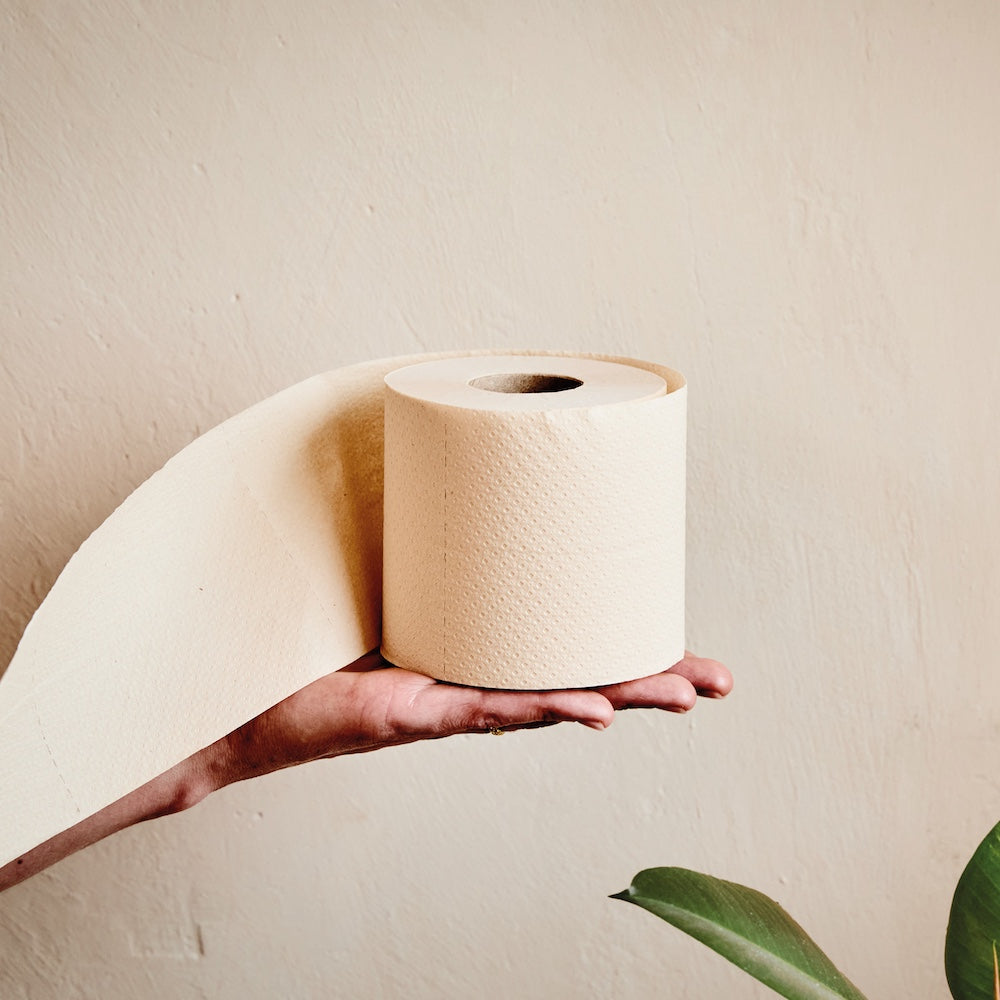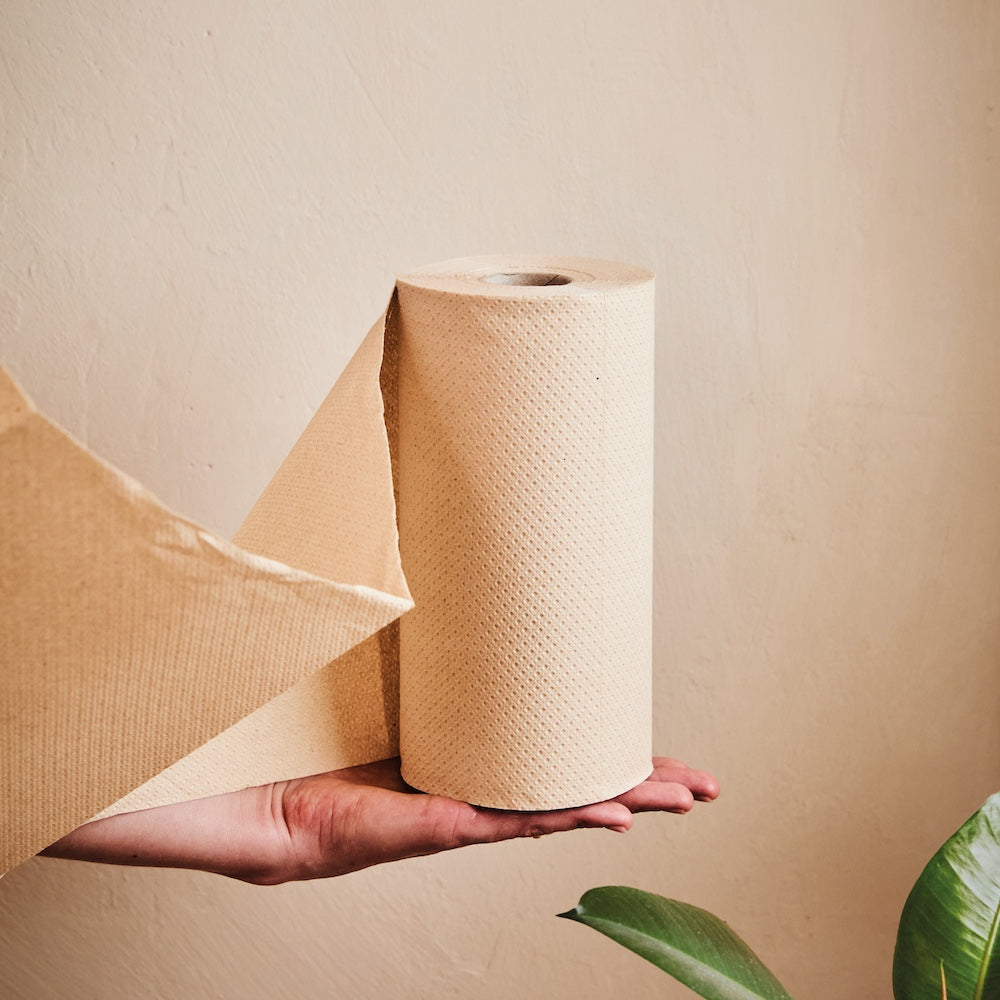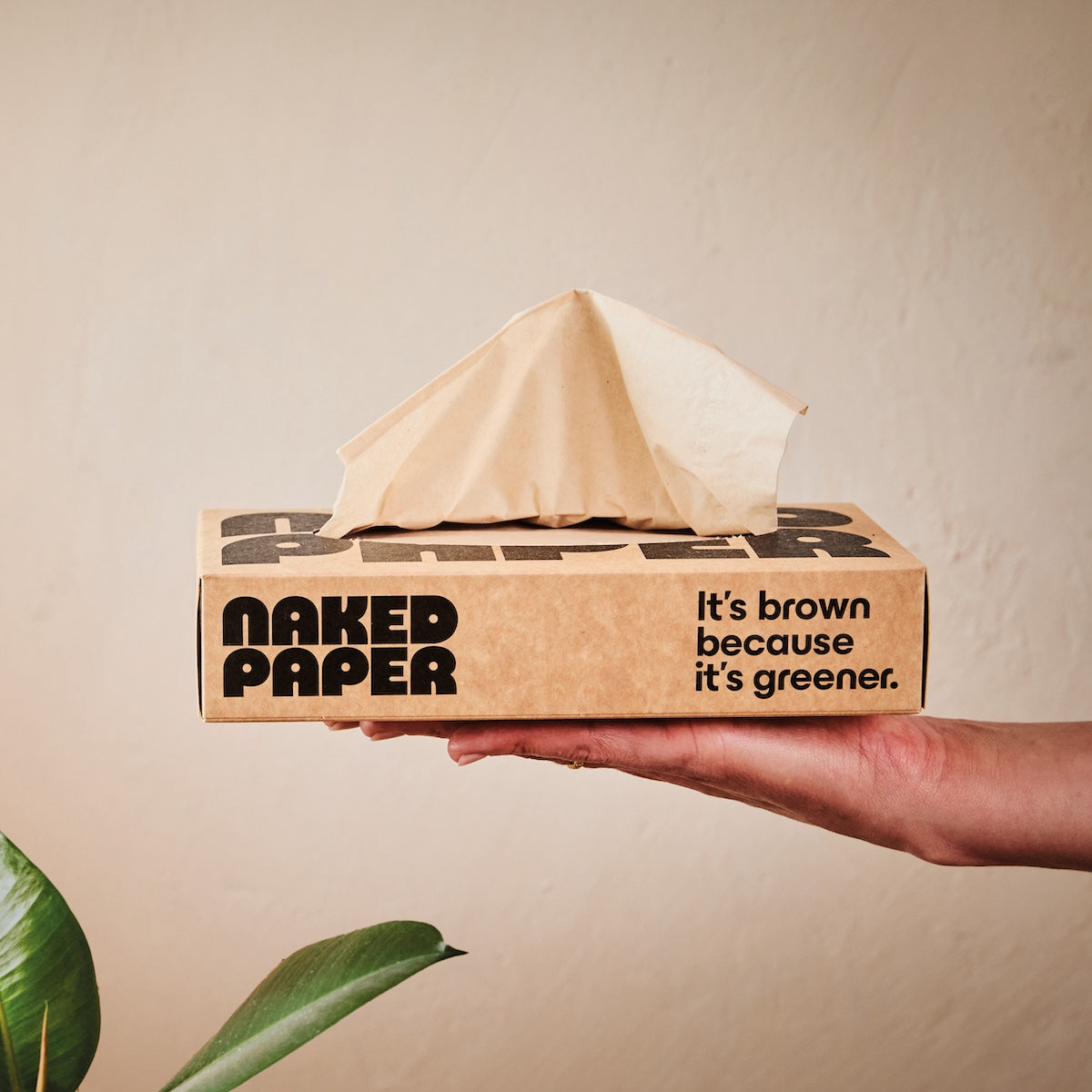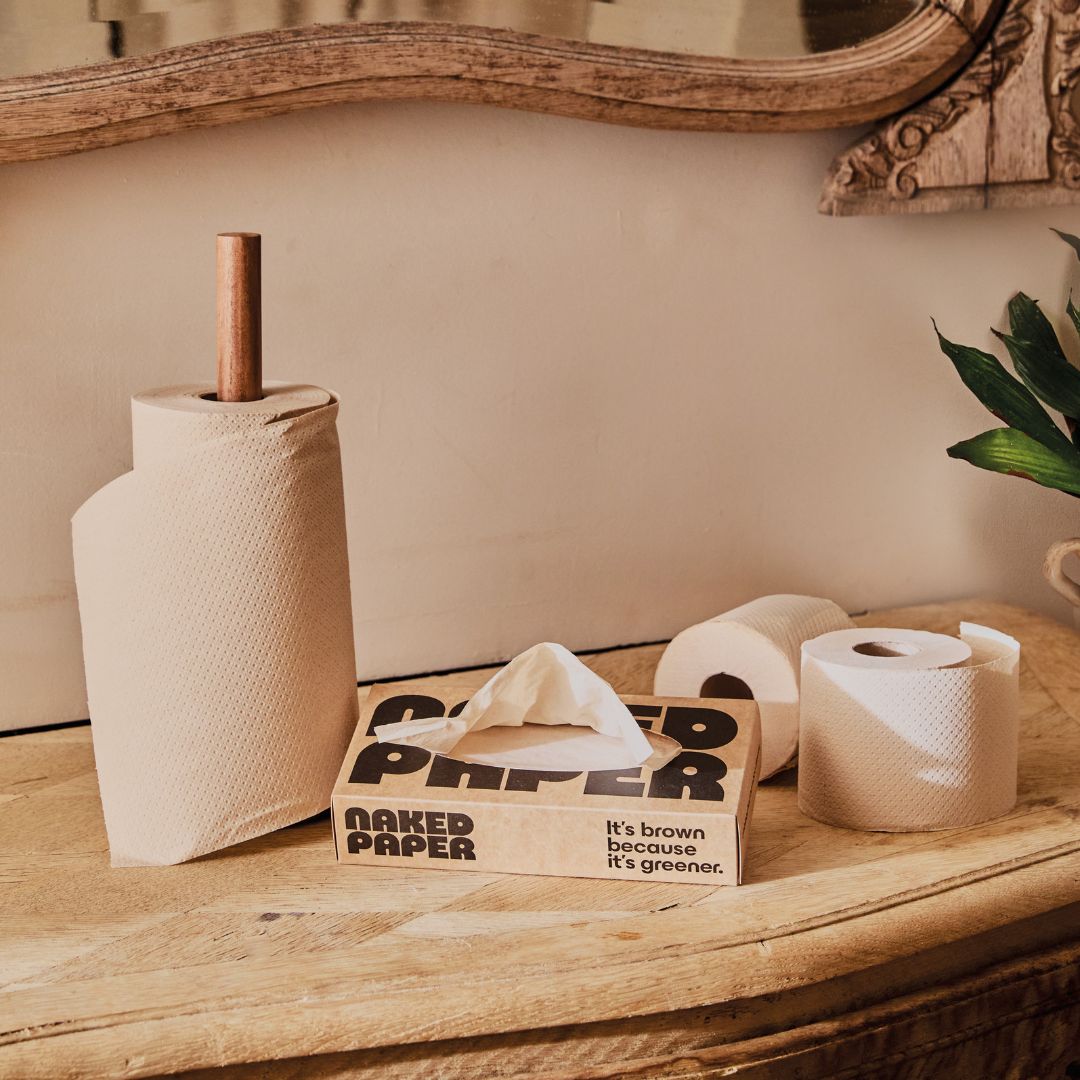How do we make non-toxic toilet paper?

At Naked Paper, we often get asked what’s in our soft, eco-friendly toilet paper. We’re always happy to answer these questions, but a better starting point might be: what’s in other toilet paper?
Many conventional toilet rolls contain chemical additives or contaminants that may have implications for our health and the health of our environment. Most of us have no idea they’re even there.
Some of these harsh ingredients are added deliberately, others find their way in through materials or manufacturing. Either way, there’s more going on between the sheets of the average loo roll than you might expect. We're grabbing our microscopes for a closer look.

What toxic ingredients can you find in standard toilet paper?
There’s no standard way of making toilet paper. Different brands use different combinations of raw materials, packaging, and ingredients. So if you want to know what’s in (or what’s not in) a particular loo roll, you’ll have to ask the toilet paper manufacturers themselves.
But there are a few harsh chemical ingredients and contaminants that can crop up in standard rolls, with a range of implications for our health and the environment.
Bleaching agents strip away the natural colour of raw materials to make white tissue. Bleach in toilet paper has been linked to a range of health impacts, as well as environmental effects. Once you know it's there, it's easy to spot; there are no raw materials you can use to make toilet paper that come in that bright white shade. If you see a white roll, you’re seeing a bleached roll.
A less obvious but still fairly common ingredient is formaldehyde, a known carcinogen. Formaldehyde prevents matter breaking down, so some manufacturers will add it to thicker, quilted types of toilet paper to improve its strength.
Bleach and formaldehyde are added to toilet paper on purpose, other toxic chemicals that can end up in loo roll as an unintended result of how they’re made.
We’ve recently posted an article about the hormone disruptor BPA, which is added to some common types of paper like glossy leaflets and till receipts, and can end up in recycled toilet paper as a result.
There’s also PFAS – often called "forever chemicals", which build up in the environment and the body and can have serious health implications. Significant levels of PFAS have been found in many big brands of toilet paper. The source of these chemicals is mysterious, but we believe it may be related to wrapping, or lubricants used in factories to prevent toilet paper from sticking to machinery.
The bottom line: a lot of toilet paper contains chemical ingredients or contaminants that have no business near your skin.
Just to reassure you at this stage, Naked Paper toilet paper contains no bleach, no formaldehyde, no BPA, and no PFAS.

So what’s in our non-toxic toilet paper?
That’s what’s not in Naked Paper bamboo and recycled toilet paper. So what is?
We keep things simple. Our bamboo and recycled toilet paper are made using water, pressure, heat, and a few gentle ingredients to clean, soften, and bind the fibres.
We use:
-
Soaps – to break down fibres and remove natural oils or residues (or inks, in the case of our recycled products).
-
Salts – to help adjust pH and support the cleaning process.
-
Adhesive – to hold the two plys of our toilet paper together. We also use adhesive to seal our boxes and cardboard cores. Our adhesive is derived from pine resin.
-
Wet strength agent – used in our kitchen roll to prevent disintegration when wet. Also derived from natural resin.
That’s it. Nothing fancy, nothing hidden, and nothing added just to make the paper look artificially white.
We’re picky when choosing these ingredients. Each one is non-toxic and compliant with REACH – the EU’s strict chemical safety regulation.
What is REACH?
REACH stands for Registration, Evaluation, Authorisation and Restriction of Chemicals. It’s one of the toughest chemical safety frameworks in the world.
It looks at what a substance is, how it’s used, how it affects the body and the environment; not just today, but over time.
REACH regulates chemicals that:
-
Build up in the body or the environment
-
Affect hormones or fertility
-
Harm aquatic life
-
Cause cancer or genetic mutations
We don’t want anything like that near our toilet paper; we’re guessing you don’t either.
That’s why none of our ingredients appear on REACH’s list of substances of concern. So while we can’t say that our toilet paper has no chemicals at all (water is a chemical after all), we can confidently say our products are free from harsh or toxic chemicals – and made to meet the highest European safety standards.

Simple tissue with high standards
We started Naked Paper when we realised that bleaching toilet paper was completely unnecessary. Stripping everyday products back to the essentials would mean less chemicals coming into contact with our bodies and our environment, and if it meant our paper looked a bit different from the norm, so be it.
With 19.5 million bleach-free toilet rolls sold over the last five years, it looks like plenty of you agree with us.
Naked Paper products are made to be gentle on our skin and gentle on the environment. If you ever have questions about what’s in our toilet paper – or what’s not – just ask. Our friendly support team will be happy to help.
And if you’re interested to find out more about why bleach is bad, or the best allergy-friendly tissues, we’ve got plenty of resources.
Want to try our soft, simple products for yourself?
Recent blog posts
-

Join our team trip to the factory!
A couple of weeks ago, most of the Naked Paper team packed our bags and headed off to northern Spain to visit the factory where all our soft, sustainable toilet paper, kitchen rolls, and tissues are made. For our founders Tom...
-

Beyond the bog standard: five years of Naked Paper
When we launched Naked Paper five years ago, we expected to stand out. Selling bleach-free, brown toilet paper is a guaranteed conversation starter; we knew people would notice, we just didn’t know if they’d get on board. Companies like Naked Paper...
-

Introducing recycled kitchen roll and tissues
At Naked Paper, we like to think that change can happen in the most everyday parts of life. In fact, the everyday parts of life, like toilet rolls for example, are often the best place to make changes. When daily-use...








